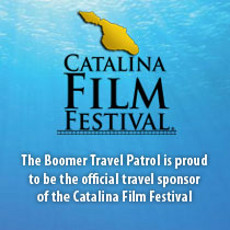Full Article:
The last thing those in the throes of the winter deep freeze think about is going to a place with more snow and ice. People north of the equator think of going south. But what if you went WAY south to a land where the wind-chill factor was conceived and snow and ice are daily companions? Sounds crazy, but I can assure you that you are in for a spectacular experience if you head to Antarctica. Seasons are opposite south of the equator so the middle of winter in the northern hemisphere is the height of “summer” in our most remote continent. It almost gets up to freezing! Let me share my experience in Antarctica as the medical officer on an icebreaker taking 100 high school students and 9 scientists to do experiments.
Antarctica is twice the size of Australia, 98 percent of which is covered by ice and surrounded by the Southern Ocean, the purported home to 70 percent of the earth’s biomass. It is politically neutral, regulated by an international treaty, and several countries have a research interest there. Many of these are located on the Antarctic Peninsula which juts out of the northwest corner of the continent and are accessible by ship. It is much more difficult to reach the actual South Pole so most research stations are on the coast.
Ships generally leave from the southernmost part of South America, many from the very picturesque town of Ushuaia in Tierra del Fuego, Agentina. To reach Antarctica by ship, one must cross some of the most turbulent waters in the world, the Drake Passage. Even a sturdy icebreaker is rocked significantly on a calm day. I will never forget giving a lecture, wedged between the lectern and the wall as the ship rolled. But once past the Drake Passage, seas became calmer as we cruised to different sites.
You cannot imagine the beauty of this area with constantly shifting patterns of gray, blue, and white and it is anything but monotonous. Cruising slowly past icebergs impresses one with the magnitude of the Titanic disaster. Many think Antarctica must be devoid of life but there are trillions of tons of krill which are consumed by a myriad of birds and fish. The estimated 35 million seals in the area follow the fish, and the large predatory seals follow both. At the top of the food chain are the mighty and spectacular orcas. One of the amazing highlights for us was the extremely rare chance to see adult orcas up close teaching their adolescents to hunt seals. While the students cheered the selected seal as it clambored back on to the ice floe, the outcome was a done deal after several practice runs by the younger ones. This was a National Geographic moment, filmed by fellow lecturer and roommate, Bill Lishman. Bill is an ultralight aircraft pioneer and protagonist of the movie Fly Away Home based on his work to reintroduce Canadian geese to their migratory pattern.
The penguins were fascinating and one attached to them quickly. These highly inquisitive birds waddled up to us when we stopped at an island with 250,000 breeding pairs. The rule is you cannot approach them but you can let them approach you, and believe me, they do.
Fortunately, we only had minor medical events but were involved in a dramatic sea rescue. A tourist boat became entrapped by ice when the wind blew the ice together and they would be crushed if not rescued. It took 16 hours to plunge through 3 foot-thick ice to reach them, cheered on by the students. For me, it was the easiest rescue for all I had to do was drink coffee and watch the very skilled captain navigate the rescue. A happy ending for all.
Here’s to you getting a chance to see the splendors of Antarctica!
Michael J. Manyak, MD
VP National Eagle Scout Association
Author, Lizard Bites and Street Riots, Travel Emergencies and Your Health, Safety, and Security
Twitter: @LizardBites
February 19, 2023








